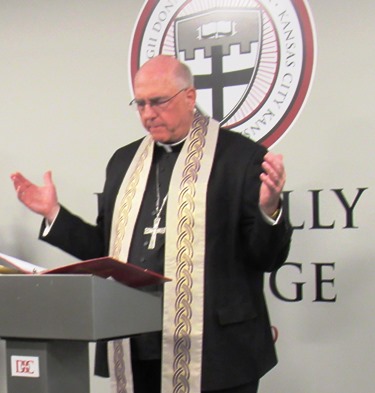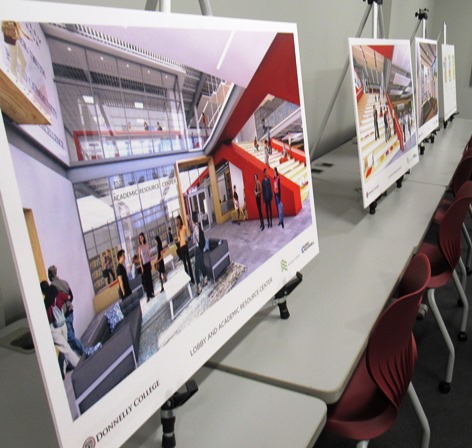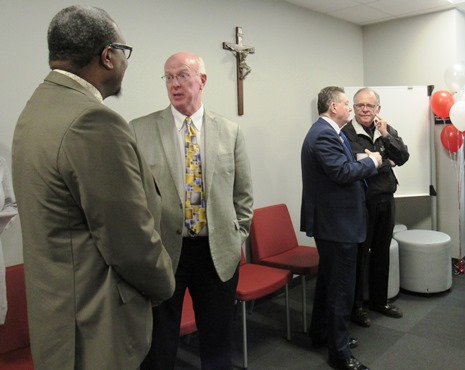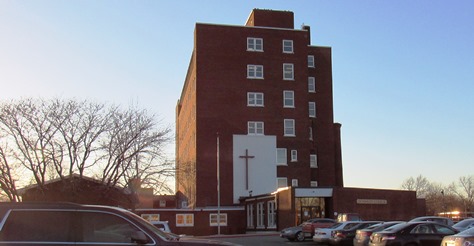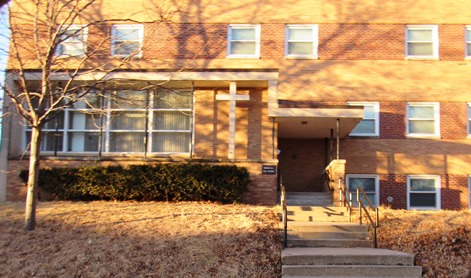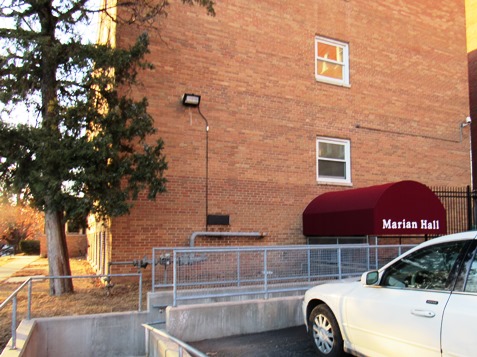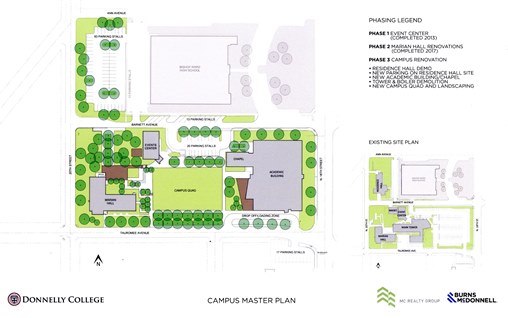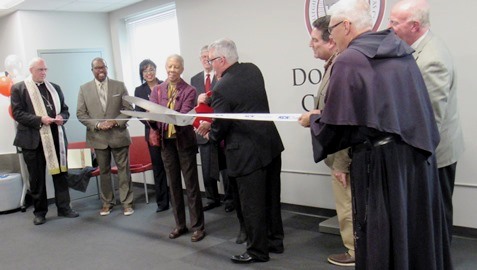
Donnelly College wants to be part of a transformation for students and the community, as well as transformations to its campus, college officials said Thursday as they marked the completion of renovations to Marian Hall.
With an open house, ribbon-cutting and dedication prayer, Donnelly College celebrated the completion of the renovation of Marian Hall on its campus at 18th and Tauromee in Kansas City, Kansas.
“It really helps to see the ‘before’ pictures, to be aware of just how much this transformation of this building is a symbol of the transformation we hope to bring to the hearts and minds of the students we serve,” Monsignor Stuart Swetland, president of Donnelly College, said. “And we do want to be part of the greater transformation of this community.”
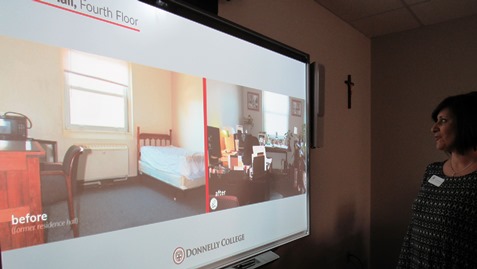
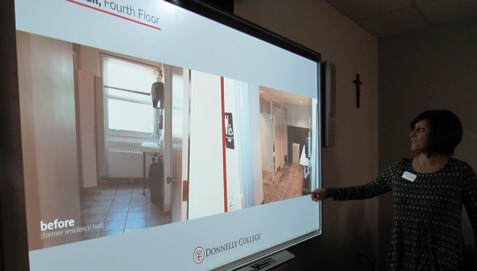
Attending the event was Lacherish Thompson, a senior in organizational leadership, who commented on the building plan.
“I’m excited about this building being built,” she said. “I think it’s going to mean great things for Donnelly.”
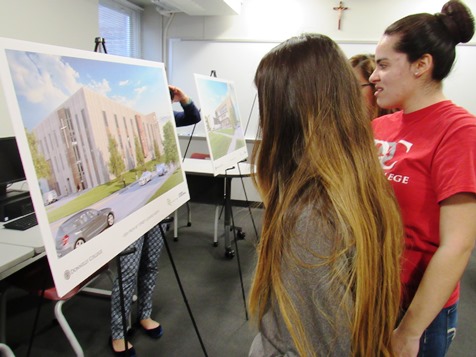
“I think it’s really neat to see how they’re going to remodel and transform the building into something more like a university,” said Mariana Valles, a Donnelly sophomore.
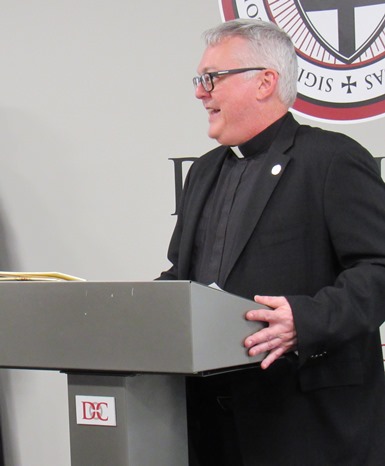
Donnelly College, a four-year college, serves more than 1,000 students this semester, and about half of the students come from Wyandotte County, Monsignor Swetland said. In this number are students of all ages, including high school students who are taking college credits.
Donnelly’s nursing program is currently located on the second and third floor of Marian Hall, he said. Years ago, the buildings housed Providence Hospital, and Marian Hall was the residence of nursing students. Later, Marian Hall was a retirement residence.
Monsignor Swetland said the recently completed renovations at Marian Hall changed the building’s usable space from 12,000 square feet to 25,000 square feet of office and classroom space, while extending the life of the building for 25 years.
There are three phases in the Donnelly College master plan, with the events center the first phase, and Marian Hall in the second phase, according to Monsignor Swetland. The cost of the first phase was $2.5 million, and the second phase, $2 million. The third phase is the construction of a new academic and administration building. The cost of the third phase is estimated at $19.5 million, according to information from Donnelly College.
“Because of the generosity of the people of God, this building (Marian Hall) came in on time, on budget, and it’s paid for,” Monsignor Swetland said.
Donnelly can now move forward on its next phase, he said. That will include building the 72,000-square-foot academic center, and moving the parking lot from the front of the Donnelly campus to behind Bishop Ward High School, which is across Barnett Avenue from the college. Currently in back of Bishop Ward High School is an international students’ residence building, a former convent building that will become the space for the parking lot, according to the site plan. The tower building on campus will come down as part of the third phase, he said.
A grassy campus area will be between the third phase new academic building and Marian Hall. The campus will change from an institutional to a collegiate atmosphere, he said.
“Also, I think it will be a jewel for us as we sell Wyandotte County in this area, to new businesses, to new residents, to new groups that are thinking about doing work and being educated here, because we’ll have something new and beautiful to show them, a place that they themselves and their children can come and be educated,” Monsignor Swetland said.
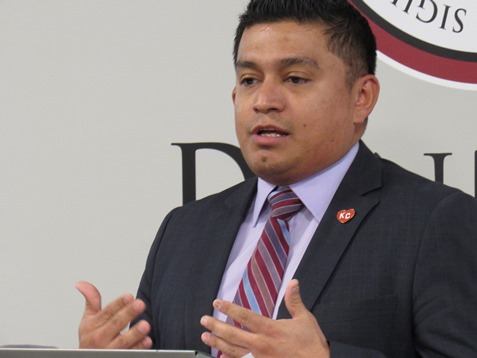
Donnelly College is one of the anchors of Kansas City, Kansas, said Daniel Silva, president and CEO of the Kansas City, Kansas, Area Chamber of Commerce.
“Any time an anchor institution is expanding, it’s great for the community,” Silva said. “Our job now is to connect the future work force to the employers.”
The renovation also is expected to be a step forward for the 18th Street neighborhood area.
Craig Gaffney, chair of the chamber’s board, mentioned the Donnelly renovation project in connection with the renaissance of downtown Kansas City, Kansas, and the redevelopment of the Prescott Plaza at 18th and I-70.
Archbishop Joseph Naumann blessed the newly renovated Marian Hall. He said Donnelly College was a gateway to so many young adults to higher education and all the doors that that opens for them.
